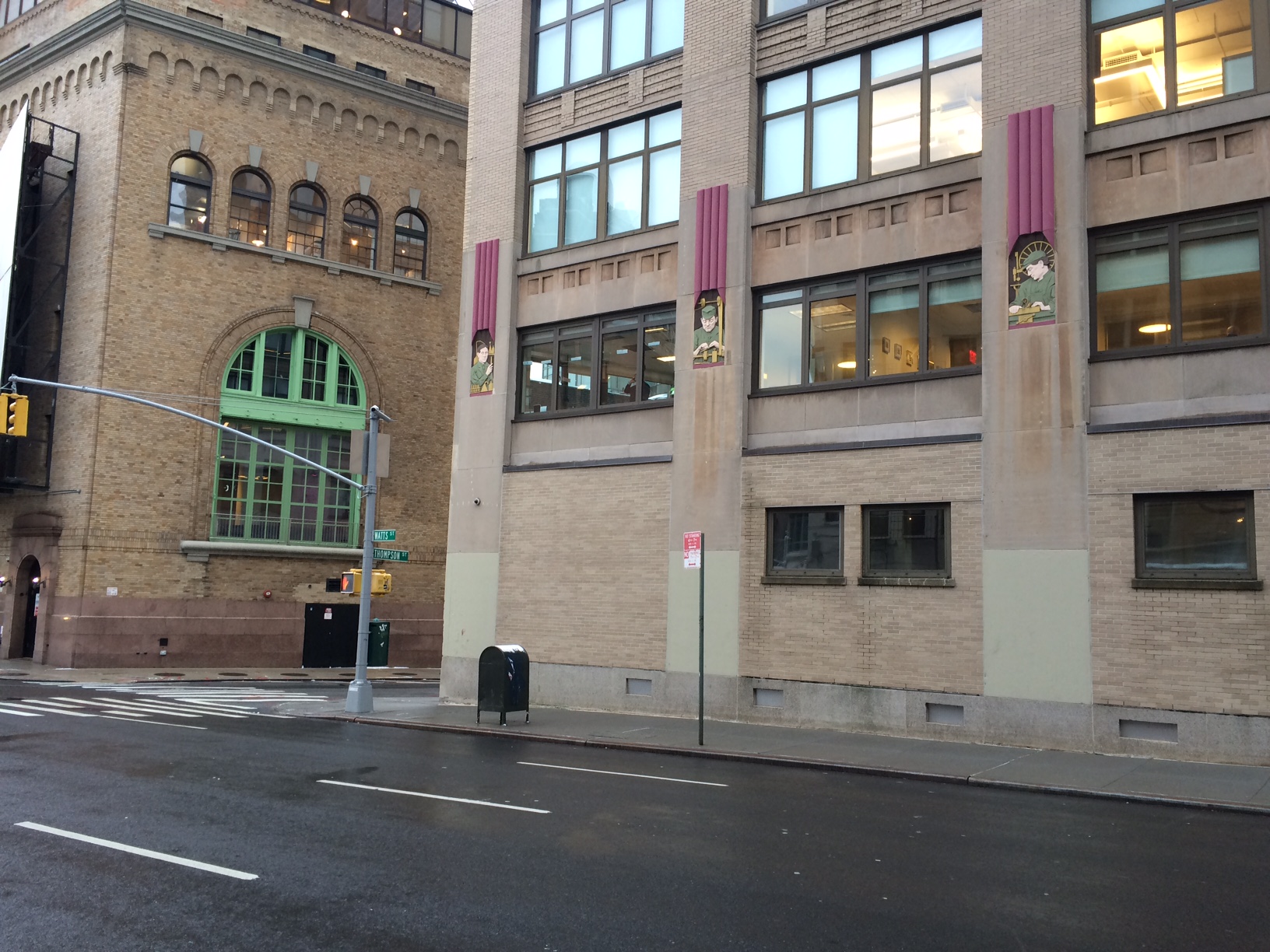
Uploaded on 2017-02-01 by Daryl King
The scale of my exploration for an image to represent New York City infrastructure was immediately orientated towards the Tribeca and SoHo borderline. On my way to that area, I recognized that there was an abundance of cobblestone streets to be photographed. Some of them were partially covered by worn down asphalt, mocking the technological advancements in transportation design as if to say that time does not care about immediacy. While wondering through SoHo, I discovered the Green Sixth Avenue Building. The Green Sixth Avenue Building was designed during the New York City Art Deco period by architect Ely Jacques Kahn. It’s facade features relief work, images of workers in green uniforms, busy at their machines and individual industries. The workers who design and implement the infrastructure, which we are dependent upon, remain just as inconspicuous as Kahn’s relief sculptures. New Yorkers are most certainly aware of moments when the city does not function as smoothly as they want it to. They remain unaware of the names of the skilled workers and firms that build and improve the city structure, yet, they are aware of the sense of comfort received by this new asset. These new designs are harmonious and apparel to current taste. The Green Sixth Avenue Building is a landmark that transcends the redefinition of the aesthetic. Each of the relief depicts a person at work in a separate industry. The New York habitat is dependent on the harmonization of these various sectors of industry to inform the overall infrastructure of the city. Looking at the facade of the building, viewers can see how the management of “the water, energy, transportation and health infrastructure” leads to a more complete and dynamic place to live. This building features a combination of shapes and describes the complexity of it’s first origin and the present. The world around, and within, the building was influenced by work, yet easily accessed by an infrastructural network. This network has subtly evolved over time, but the view from the corner of Thompson and Watts Street appears to be the same.